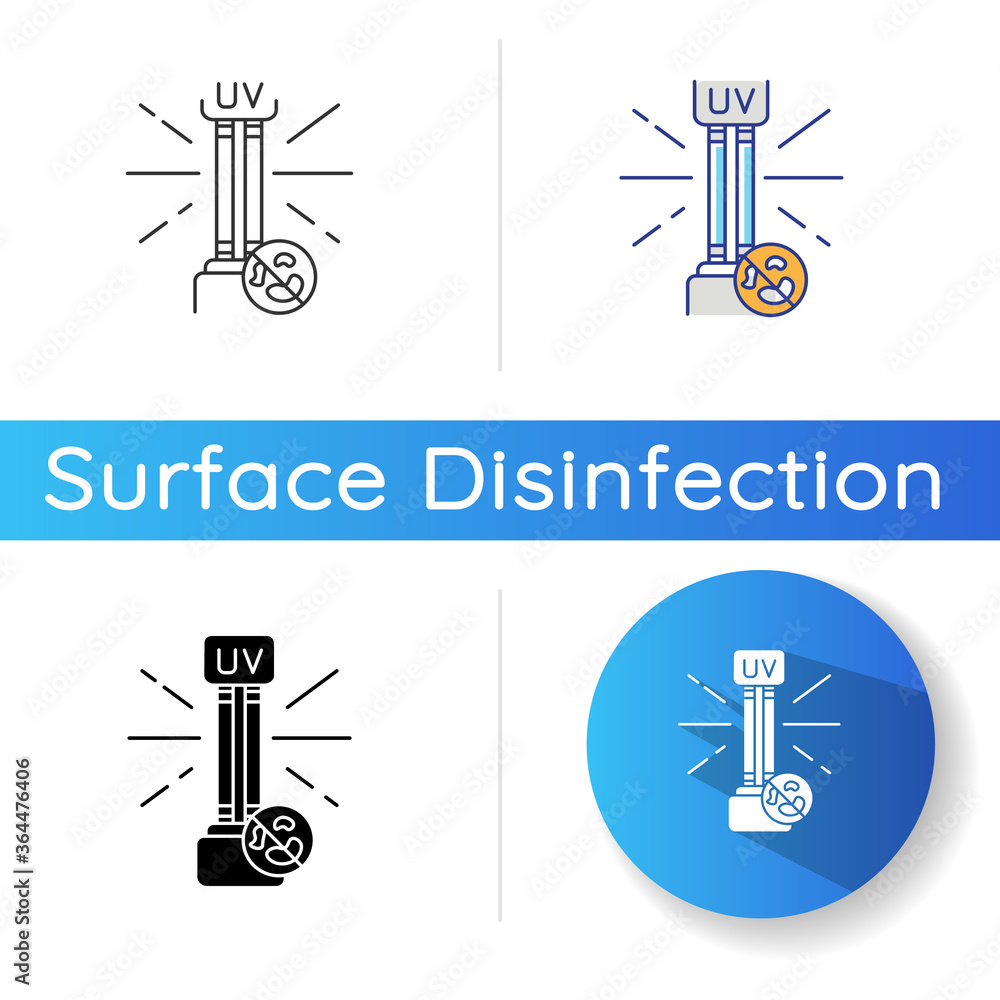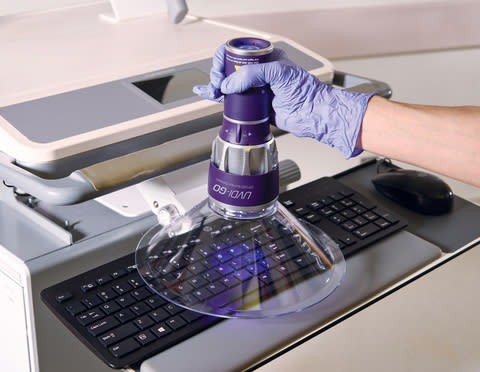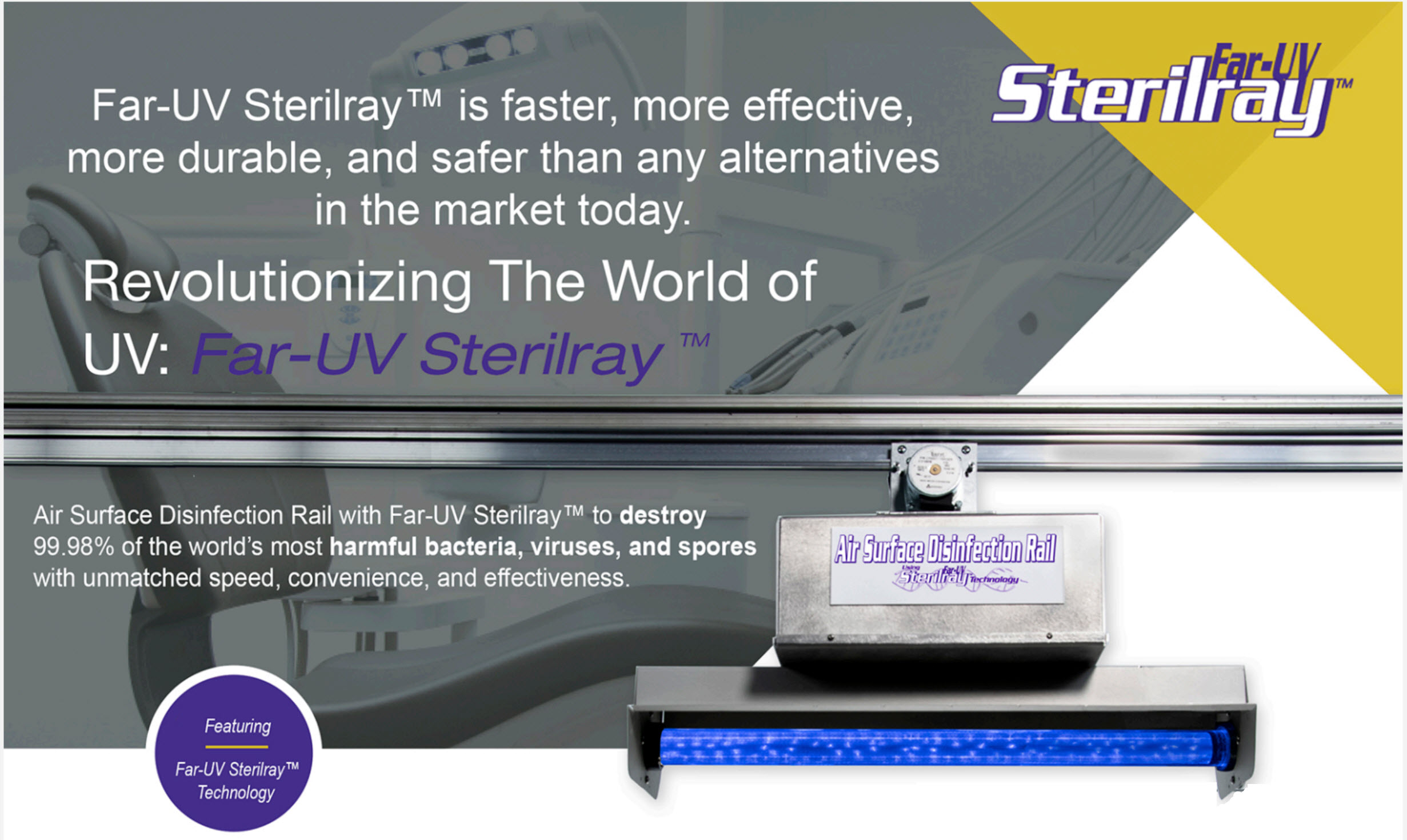Exploring UV Sanitation: A Crucial Device in the Battle Versus Unsafe Virus
As the globe encounters an ever-increasing danger from hazardous virus, the search for effective techniques of sanitation has ended up being an urgent concern. One such approach that has actually gathered substantial interest is UV sanitation. In this conversation, we will dive into the world of UV disinfection, uncovering its prospective as a necessary tool in the fight versus damaging virus.
How Does UV Disinfection Job?
UV sanitation works by making use of ultraviolet (UV) light to eliminate damaging virus and avoid their spread. This very reliable method involves making use of UV radiation to disrupt the DNA and RNA of microbes, rendering them unable to reproduce and creating their ultimate damage.
When UV light is utilized for sanitation, it is commonly released from a light or light bulb that generates a details wavelength of UV-C light. uv surface disinfection. This wavelength, ranging from 200 to 280 nanometers, is especially efficient at permeating the external cell wall of microorganisms, infections, and various other bacteria. As soon as inside the cell, the UV radiation targets and damages the genetic product, preventing the microorganism from creating and duplicating infection
UV disinfection systems are designed to send out the ideal strength and period of UV light to make sure reliable virus removal. The dosage of UV light required for disinfection depends on factors such as the kind of microbe, its resistance to UV radiation, and the certain application. Additionally, the system has to be thoroughly engineered to ensure appropriate direct exposure of the target microorganisms and to avoid any kind of prospective harm to humans or the setting.
The Advantages of UV Disinfection
UV sanitation provides a wide variety of benefits in properly eliminating hazardous pathogens and minimizing the threat of infection. One of the key advantages of UV disinfection is its capacity to supply a chemical-free and ecologically pleasant remedy. Unlike conventional sanitation methods that depend on chemicals, UV sanitation utilizes ultraviolet light to ruin the DNA and RNA of microbes, rendering them unable to duplicate and trigger infections. This chemical-free approach makes sure that no damaging residues are left, removing any type of potential wellness risks connected with chemical disinfectants.
An additional considerable benefit of UV sanitation is its performance in eliminating a wide variety of pathogens. UV light has been verified to successfully remove bacteria, viruses, fungi, and protozoa, including those that are immune to conventional disinfectants. This broad-spectrum efficiency makes UV sanitation a versatile tool in different setups, such as medical care centers, water therapy plants, and food processing industries.
Along with its effectiveness, UV disinfection likewise uses quick sanitation cycles. Unlike various other techniques that call for extensive get in touch with times or repeated applications, UV disinfection can attain considerable microorganism reduction immediately. This effective and quick process allows for enhanced productivity, lowered downtime, and increased general functional performance.
In addition, UV sanitation is a non-contact method, which implies that it does not require straight physical call with the surfaces or objects being sanitized. This feature makes it suitable for use on fragile devices and sensitive products that may be damaged or influenced by various other disinfection approaches.
Applications of UV Disinfection in Healthcare

UV sanitation is also used in the click this site sanitation of clinical equipment and instruments (uv surface disinfection). The high intensity of UV light can effectively kill germs, infections, and various other microbes, making sure that clinical devices are safe and complimentary from contaminants. Furthermore, UV disinfection is utilized in water therapy systems within medical care facilities. UV light is capable of inactivating harmful germs, infections, and bloodsuckers, making the water secure for intake and decreasing the threat of waterborne infections.
Additionally, UV disinfection innovation is employed in the disinfection of health care uniforms and personal safety devices (PPE) By using UV light, medical care specialists can make certain that their attires and PPE are without microorganisms, stopping the transmission of infections between clients and healthcare workers.
UV Sanitation in Public Spaces
Public rooms are progressively carrying out UV disinfection innovation as a vital procedure to deal with the spread of damaging pathogens. With the recurring international pandemic and the consistent danger of contagious diseases, the demand for reliable disinfection methods in public locations has become paramount. UV sanitation uses a trustworthy and efficient remedy in this respect.

UV sanitation systems use ultraviolet light to deactivate the DNA and RNA of germs, infections, and various other microorganisms. This process disrupts their capability to reproduce and provide them safe. These systems can be mounted in various public spaces, including cooling and heating systems, escalators, elevators, and surface area sanitation robotics. Making use of UV sanitation technology in public spaces not only assists in decreasing the risk of infection but additionally instills self-confidence amongst the general public regarding their security.
As public spaces remain to adapt to the difficulties positioned by contagious conditions, UV disinfection technology plays an important role in guaranteeing a clean and risk-free atmosphere. By executing such measures, public spaces can properly mitigate the spread of unsafe virus and add to the general wellness of the community.
The Future of UV Sanitation Modern Technology
As the need for improved disinfection approaches proceeds to grow in response to the recurring worldwide pandemic and the continuous danger of contagious diseases, the future of UV sanitation technology holds promising developments in ensuring a lot more effective and efficient pathogen obliteration in different settings.

One area of improvement is the growth of even more portable and portable UV sanitation this post tools. Furthermore, advancements in automation and robotics are being checked out to improve the effectiveness and efficiency of UV disinfection processes.
An additional area of expedition is using UV sanitation in air filtration systems. By incorporating UV-C lights into heating and cooling systems, air-borne pathogens can be properly neutralized, lowering the threat of transmission in interior environments.
Moreover, scientists are examining using UV sanitation in food processing centers to make certain the safety and high quality of food. UV-C light has been located to be effective in getting rid of foodborne microorganisms, supplying a chemical-free alternative to standard disinfection methods.
Final Thought
To conclude, UV sanitation is a necessary tool in the battle versus unsafe pathogens. Its efficiency in killing germs, infections, and other microbes makes it a beneficial modern technology in health care setups and public rooms. With its capacity to provide a chemical-free and eco-friendly approach of disinfection, UV technology holds excellent possible for the future. Its widespread implementation can contribute to the prevention of infections and the improvement of public health.
UV sanitation systems are developed to discharge the proper strength and period of UV light to make certain efficient microorganism elimination. The dose of UV light needed for disinfection depends on elements such as the type of microorganism, its resistance to UV radiation, and the details application. Unlike typical disinfection methods that count on chemicals, UV disinfection utilizes ultraviolet light to damage the DNA and RNA of bacteria, making them not able to reproduce and create infections.In addition to its efficacy, UV sanitation also supplies rapid disinfection cycles. One of the major applications of UV disinfection in medical care is in the disinfection of client areas and operating cinemas.